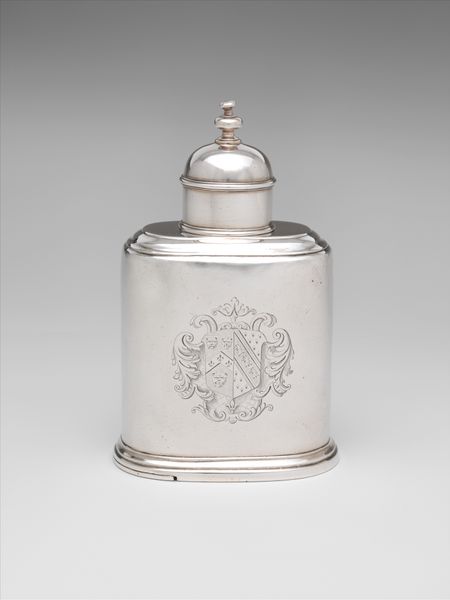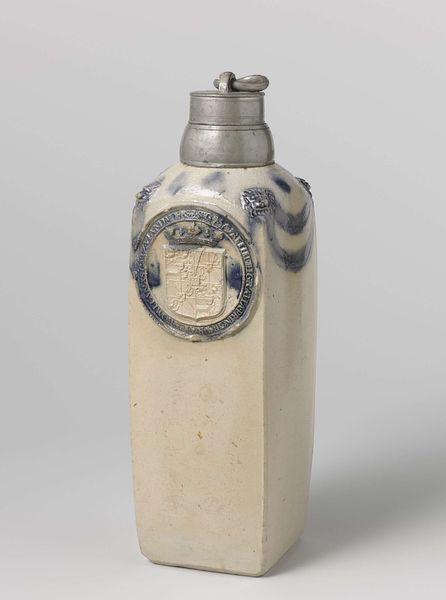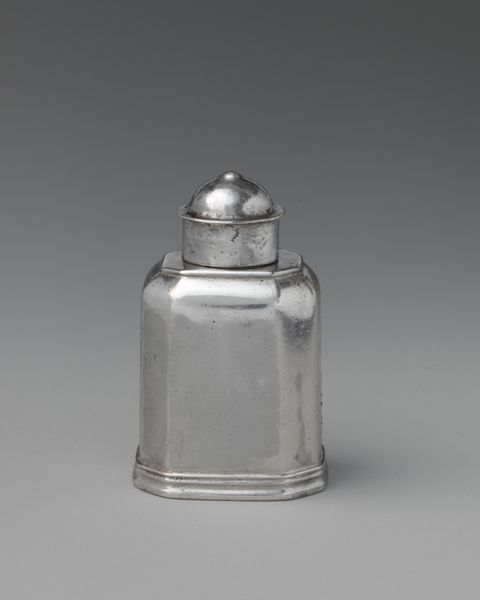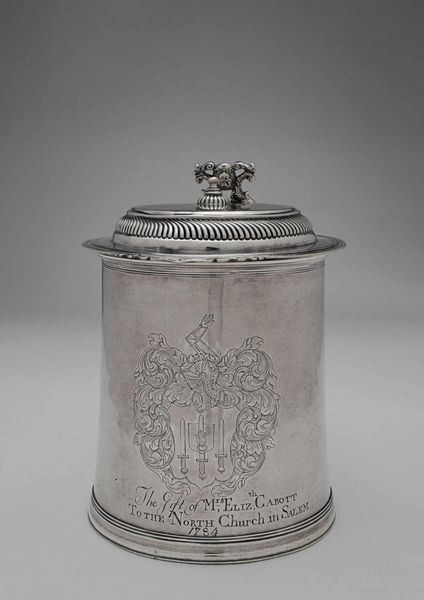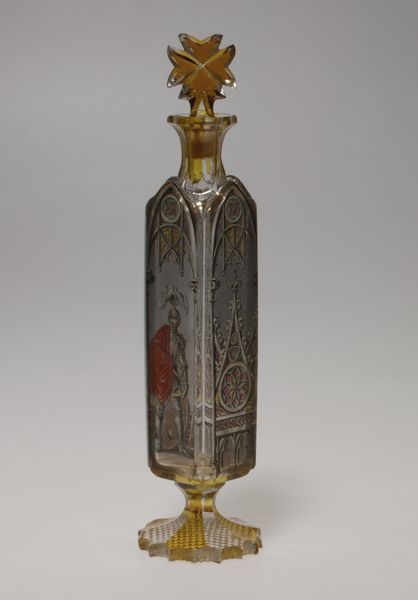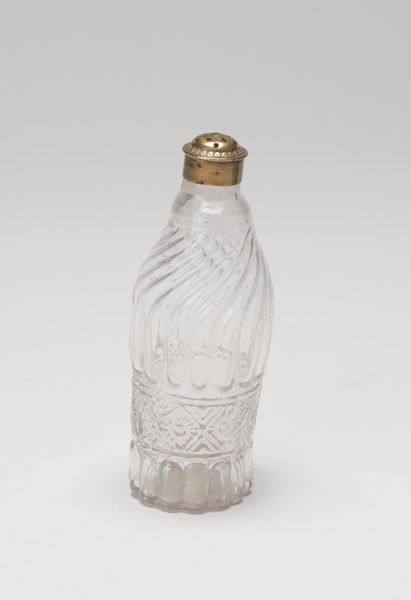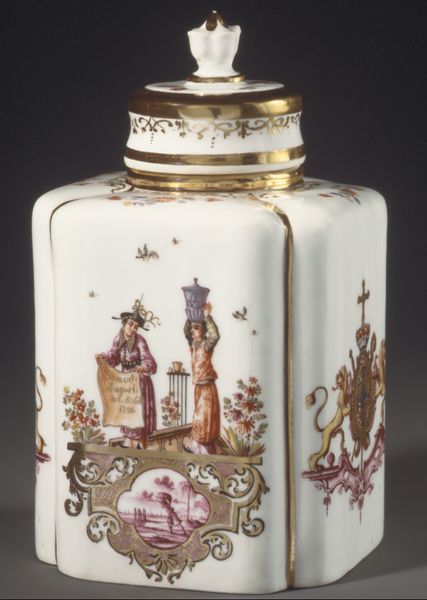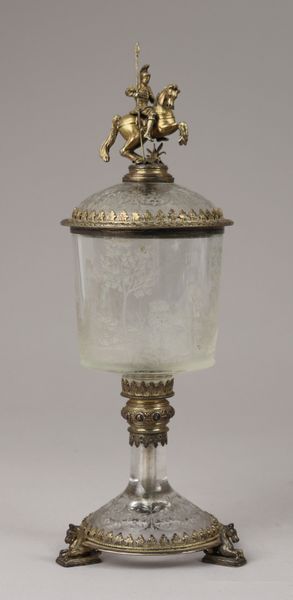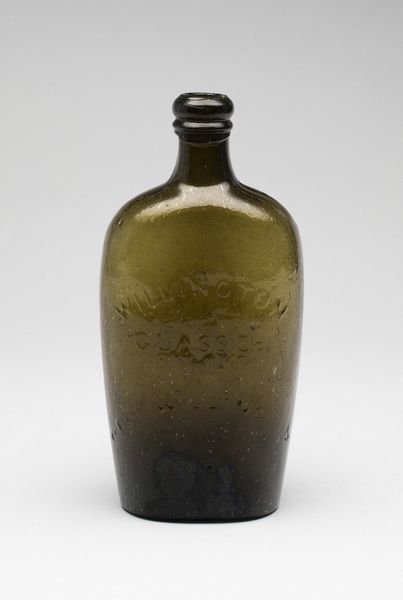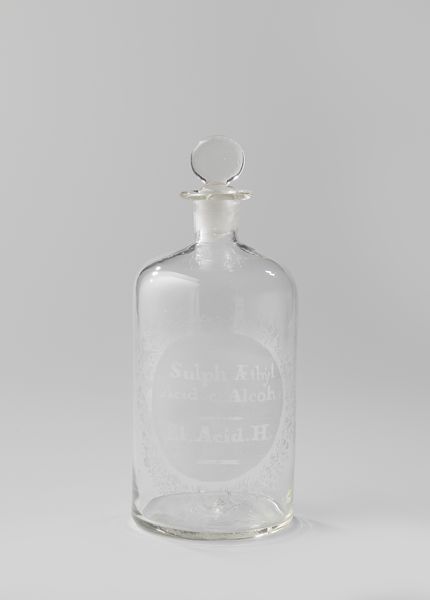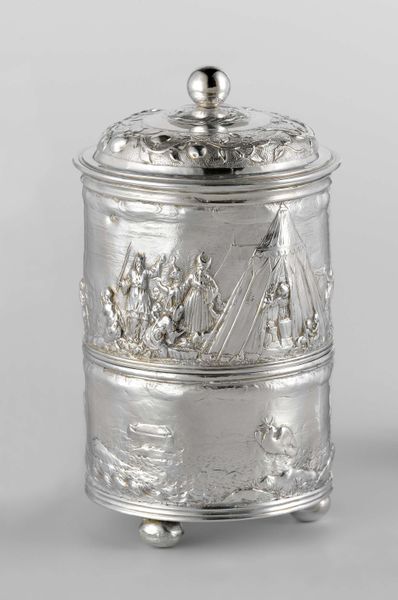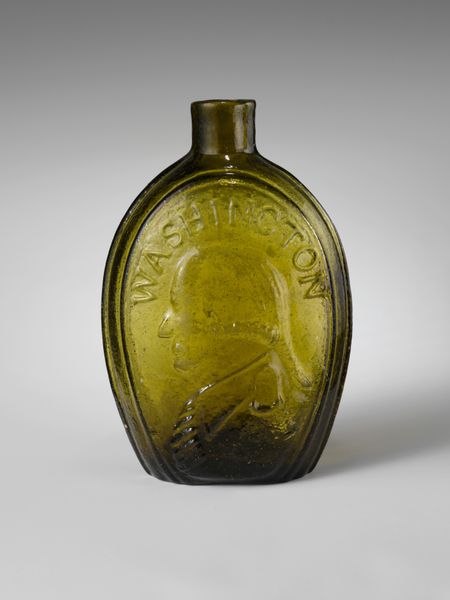
silver, metal, sculpture
#
silver
#
metal
#
sculpture
#
decorative-art
Dimensions: Overall: 8 9/16 x 3 1/16 x 3 1/16 in. (21.7 x 7.7 x 7.7 cm)
Copyright: Public Domain
This canister was made in Germany in the mid-17th century by Erhardus Wüstermann, using silver and gilding. This object speaks to the importance of social status and lineage in the Holy Roman Empire. The elaborate coat of arms suggests it was commissioned by or for a member of the aristocracy. The canister would have served a functional purpose, likely for storing spices or precious substances, but its ornate design elevates it to a symbol of wealth and power. The use of precious metals like silver and the added detail of gilding were visual cues that reinforced the owner's elevated position in society. Understanding this piece requires looking into the history of heraldry and noble families of the period. By looking at family trees and social hierarchies, we can reveal the object's full significance as a marker of social identity.
Comments
No comments
Be the first to comment and join the conversation on the ultimate creative platform.
